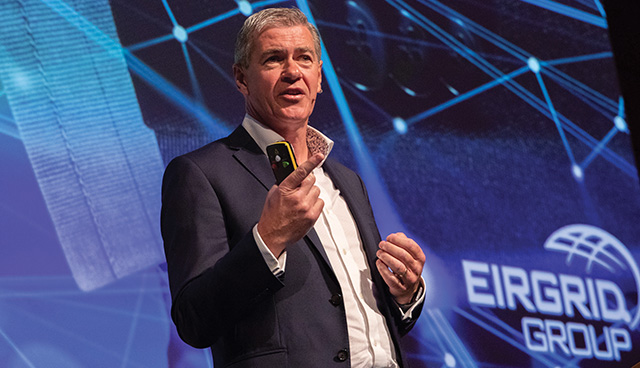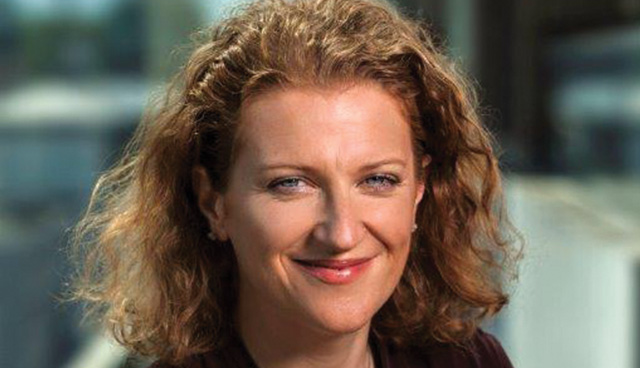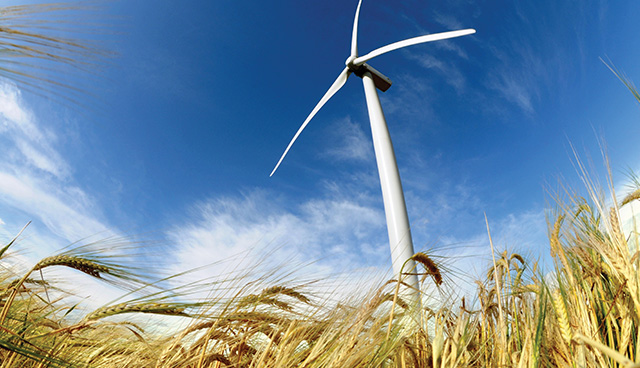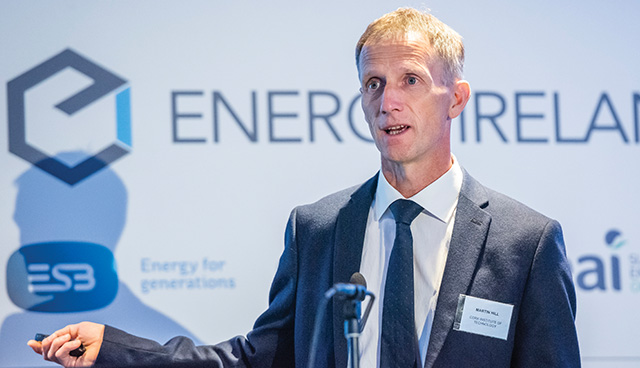
It’s a revolution, not an evolution
25th November 2019
Bridging the gap: The growing market for renewable power purchase agreements
25th November 2019The potential for local energy co-operativeas in Ireland

A truly co-operative ethos can be applied in helping to make this a reality, but projects of this nature must be fully supported by government, says Martin Hill of Cork Institute of Technology’s Department of Electronics and Electrical Engineering. He discusses the power of local communities have to take hold of their own agenda and deliver much greater levels of energy self-sufficiency.
Such initiatives, according to Hill, can drive the future uptake of renewable energy technologies, but a number of obstacles remain in the way of making this happen. In Ireland one of the impediments to the growth of co-operative energy production is the structure of Ireland’s electric grid.
Hill foresees a future where the grid would have to be altered in ways that would allow it to accept electricity from what can be best described as micro generation-based projects. Currently, the system is structured to accept electricity from conventional power stations and the large, wind-based renewable projects. In other words, the grid would have to become much more flexible in the ways it operates, from both a generation and distribution perspective.
Hill says that, under the current EU criteria, renewable energy communities involve groups of citizens, social entrepreneurs, public authorities and community organisations participating directly in the energy transition by jointly investing in, producing, selling and distributing renewable energy. Beyond the reduction of greenhouse gas emissions, EU policy makers believe there to be many other benefits that can be developed for the communities involved. These include economic development, the creation of new jobs, cheaper energy, self-sufficiency, community cohesion and energy security.
Regional authorities can also support the emergence of energy communities by providing financing, expertise and advice, and ensuring that regulatory issues can be easily understood and navigated. Discussing the role of prosumers in the evolution of Ireland’s energy landscape, Hill says: “We need distributed generation and we also need to see prosumers – people who both produce and consume energy – engaging in this project.”
Hill moves onto the impact of the EU’s North West Europe Energy Community Co-Operatives (ECCO) project in empowering local communities to become prosumers. At the core of the initiative is a commitment to encourage groups – particularly farmers – to develop renewable energy projects that are wholly sustainable. Another priority for the initiative is to join-up these various projects in a meaningful way courtesy of bespoke communications’ programmes.
The forms of renewable energy encompassed by ECCO include – solar, wind hydro and biomass. Experience has shown that farmers offer the physical and social resources needed for a decentralised, community-based approach to provide renewable energy.
According to Hill, ECCO is a project that will be built from the bottom up. Initial analysis of nine existing co-ops (beacons) will be used as a building block to develop an additional 50 ECCOs during the lifetime of the project. Each beacon will produce at least 600 MWh of renewable energy, on average, and reduce GHG emissions by 7.500 tons/year in total. CIT is an associated partner of the ECCO project and staff have been charged with the responsibility of developing a beacon ECCO as part of their commitment.
Summarising the impact made by a number of the beacon projects to date, Hill speaks of an EPV co-operative in Brittany that has successfully implemented three wind farm projects, all of which are community managed. The initiative, which was founded in 2005, is the driver behind Project Begawatt. Built at a cost of €12 million, it comprises four wind turbines that provide electricity for 8,000 houses.
The German village of Oberrosphe has been equally successful in securing community involvement in renewable energy. At the centre of its ECCO initiative is a community-owned woodchip burner that was installed in 2008 and produces heat for 55 per cent of the town’s households. Fuel is sourced from wood and trees cut from the surrounding area and the general upkeep of the plant is undertaken by cooperative members themselves.
To ensure the town’s energy needs are met throughout the year, a biogas plant running on maize and manure from local farms was installed in 2011. To add to the town’s energy mix, photovoltaic panels have been fitted to the woodchip plant, generating power which is then sold to the local electricity company.
Another beacon project is Lochem Energie. According to Hill, this Dutch co-operative has 9,000 members. It owns a number of community subscription solar parks. A wind farm is currently under development. Founded in 2011, the co-op is also at the heart of a very innovative car sharing project.
“Community energy is any combination of at least two elements. These are the involvement of local stakeholders, owning the majority or all of a renewable energy project,” Hill says. “Voting control must rest with a community-based organisation while the majority of social and economic benefits are distributed locally.”
He says that communities deliver a range of benefits in meeting the EU’s transition energy goals and points out that community involvement significantly reduces the levels of opposition that has arisen against renewable projects driven by big business. This was particularly the case in Ireland regarding a number of onshore wind project some years back.
“Co-operative based energy projects will deliver added value to the regions involved. These are new economic opportunities which can create new jobs with a local identity,” he says. “They will also act to accelerate renewables’ deployment rates while lowering energy prices. Where wind and biomass are concerned, they also provide an opportunity for the deployment of quite large-scale technologies.”
However, Hill also says that the evolution of the ECCO project will not be without its challenges, including a lack adequate knowledge where matters of finance, technology, marketing, and management are concerned in local communities. This then prevents those involved from becoming reliable renewable energy providers.
Moving on to what constitutes a functioning energy community, from the point of view of its structure, governance and starting point, Hill describes how time is also an important factor in the development of any community-led energy project. He cites the case of the EPV project in Brittany, an initiative that was kick-started by two residents querying if they could put a wind turbine in their back garden. That was in 2002: the project competed its initial development phase in 2013.
According to Hill, the ECCO project is helping to support energy communities. He adds: “Community is a key player in the process of energy transition. This works at both utility and prosumer scale, but many challenges lie-ahead for the ECCO project. These include the need to develop well-structured support mechanisms.”
Hill finishes excitedly by speaking of the growing support for community energy projects at an EU level before adding that this has not yet been reflected in the commitment shown by individual member states across Europe.

